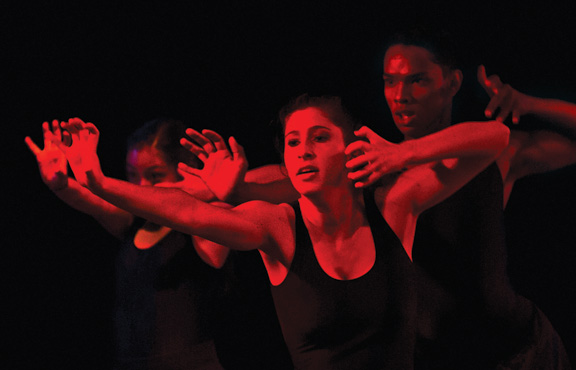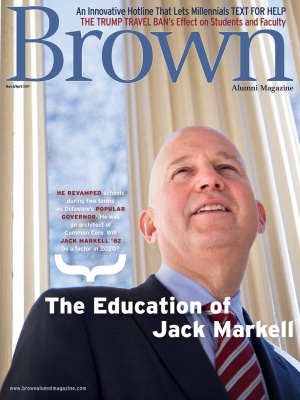For the moment, at least, visitors to campus may be unaware that Brown is making transformative investments that will position it as a leading liberal arts university for the arts.

Visitors attending a theater production, a photo exhibit, or a musical performance might already reasonably conclude that Brown enjoys a vibrant, flourishing arts scene. But they would likely not notice other, subtler, but infinitely more telling markers of just how vibrant, flourishing, and, indeed, central the arts are and have always been at Brown.
Take, for example, the impromptu artistic expression that often springs up across the campus. Few things bring me greater joy than being in the right place at the right time as I make the rounds on campus and happen upon bursts of creativity: a pop-up story slam, an art festival, or a spontaneous aria on the steps of Manning Chapel.
Then there is the potent, relentless exploration of social issues through the lens of art and creativity. Scores of imaginative Brown students find in art an opportunity to promote justice, peace, and awareness, and this results in such compelling exhibits as last year’s Atmospheres at the Institute at Brown for Environment and Society or in powerful programs like Space in Prison for Arts and Creative Expression, through which students offer arts workshops to inmates.
At Brown, daily student-faculty interactions embed the creative process across disciplines—joining the arts to neuroscience, history, engineering, and so many others—allowing students to see how the arts can infuse their work and advance new forms of knowledge. All of these campus experiences have resulted in a pantheon of accomplished alumni artists who have become leaders and innovators in their fields—individuals who found on College Hill a spacious, positive atmosphere of discovery and purpose where they successfully coaxed out their muse.
As Pulitzer Prize–winning playwright Lynn Nottage ’86 noted in a 2015 interview with the Minnesota Daily, “At Brown, I learned more about the joy of making theater, because I had no expectation that it was ever going to become a career.” In The Brown Reader, Sarah Ruhl ’97, ’01 MFA, recalled the voice of former Brown theater professor Paula Vogel, who, time and again, said to her, “You should write that play,” and adds that, among the many things Vogel taught her, the most important of all was love, “love for the art form, love for fellow writers, and love for the world.” Similarly, when acclaimed installation artist Keith Mayerson ’89 returned to campus in 2014 to coteach the Critique Intensive class in the Department of Visual Arts, he told the Brown Daily Herald that “the ubiquitous thing about most Brown students is that they want to make the world a better place, and you can’t do that on your own.”
Brown has always considered the arts central to its academic mission, and the new Brown Arts Initiative (BAI) builds on this rich tradition. A 1970 report by the Committee on the Arts—cochaired by emeritus professor and Nobel Prize–winning physicist Leon Cooper—envisioned a performing arts center to strengthen the “creative arts” at Brown. Now, forty-seven years later, a critical step has been taken to realize this vision. Now that the Brown Corporation during its February meeting authorized selecting an architect for a state-of-the-art performing arts center, Brown will, in time, welcome a centerpiece of the BAI, a new hub for music, dance, theatre, and multimedia arts production.
The BAI will embody our pursuit of excellence in other ways, too: with new academic and cocurricular programs, with new Professors of Practice and visiting artists joining our faculty, with partnerships with RISD and other community organizations.
All of which will ensure that artistic exploration will remain a valued part of a Brown education, offering students a contemplative window through which they may imagine the world anew and see themselves and their lives in a fresh light. And future visitors to Brown may appreciate our vibrant, flourishing arts scene more than ever.





